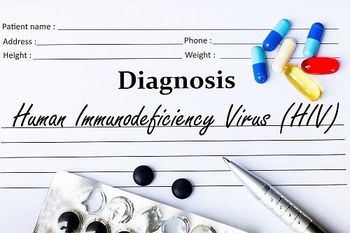
Fostemsavir Improves Outcomes for Treatment-Resistant HIV Patients
After 5 years of treatment, fostemsavir improved immunologic response and virologic outcome in patients with highly resistant HIV infection.
At the
The phase 3 BRIGHTE study analyzed the safety and efficacy of
“These results are so significant,” said Kimberly Smith, MD, ViiV Healthcare head of research & development. “With such a clinically meaningful improvement in CD4+ count in the study population, these extensive and robust study findings demonstrate the durability of fostemsavir and its suitability as a treatment for these people living with HIV.”
BRIGHTE was an international, 2 cohort (randomized and non-randomized) phase 3 clinical trial. BRIGHTE was designed to evaluate the first-in-class attachment inhibitor fostemsavir, when used in conjunction with optimized background treatment (OBT).
Rates of virologic response remained consistent over time through week 240, with 45% (n = 120) of patients achieving virologic suppression after fostemsavir plus OBT. CD4+ cell counts steadily increased, rising to 296 cells/mm3 by week 240. In the randomized cohort, 78% (n = 73) participants had an increase in from <200 cells/ mm3 to ≥200 cells/mm3, and 67% (n = 22) had a change from <20 cells/ mm3 to ≥200 cells/ mm3. By week 240, CD4+/CD8+ ratio rose steadily from baseline, reaching an average of 0.6 in the randomized cohort.
After approximately 5 years of fostemsavir-based treatment regimens, people living with multidrug-resistant HIV infection exhibited durable virologic responses and continued, statistically significant, in CD4+ cell count and CD4+/CD8+ ratio.
Since its inception, antiretroviral therapy (ART) has significantly decreased HIV-related mortalities. However, heavily treatment-experienced patients may experience treatment failure and antiviral resistance. Thus, there is a need for treatments that meet the complex needs of patients living with highly resistant HIV infection.
After oral administration, fostemsavir is converted to temsavir, which once absorbed exerts antiviral activity by directly attaching to the glycoprotein 120 (gp120) subunit on the surface of the HIV viral cell. This blocks HIV cells from attaching to the host’s immune system CD4+ T-cells, inhibiting the virus from infecting the host cells and continuing to multiply. Fostemsavir is the first ART to target this step of the virus lifecycle.
Fostemsavir is administered via a 600 mg extended-release tablet, taken twice daily with or without food. The most commonly reported adverse reactions, observed in ≥5% of randomized and non-randomized participants, were nausea, diarrhea, and fatigue.
“Given these findings fostemsavir remains a good representation of our commitment to developing innovative medicines for all people living with HIV,” Smith said, “regardless of where they are in their treatment journey.”
Newsletter
Stay ahead of emerging infectious disease threats with expert insights and breaking research. Subscribe now to get updates delivered straight to your inbox.

















































































































































































































































































